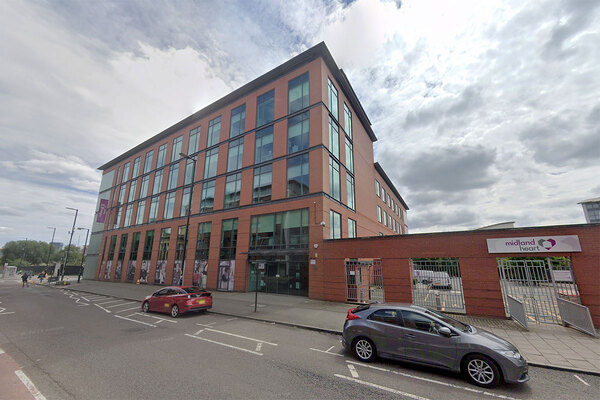You are viewing 1 of your 1 free articles
How rooftop homes helped turn on our development pipeline
Robin Roberts explains how rooftop development has transformed his small housing association’s development pipeline
When I became chief executive in 2018, Sutton Housing Society had been following a pattern for development that will be familiar to many smaller landlords.
There was a desire and willingness to build homes, but the projects were limited, sporadic and were on a reactive rather than proactive basis.
But as many ‘smalls’ will also testify, developing this way can make the process feel like something of an exciting but out-of-the-ordinary distraction from the day job.
“This is my first experience of airspace projects, but I saw it as a fantastic learning opportunity for myself and the business, and the best chance for us to maximise our return on investment”
In my opinion, this is a challenge that confronts many smaller organisations. Namely, how do you normalise and spread out time and capital-intensive activity so it becomes more manageable?
The key is finding ways to set the terms and assume more ongoing control.
I knew I would have to be creative and find as many new sites as possible, and establish a proportionately-sized development pipeline, that spread the supply of new homes more evenly.
Working with what we have
Prior to taking up my role, a visit to Sutton quickly confirmed that no traditional development sites were available, although several dated 1970s apartment buildings looked good candidates for airspace development.
Prior to a structural survey, I wouldn’t know the extent of what was possible with each building. But as a chartered architect and surveyor, my instincts told me airspace would yield more new homes than other options, such as infill sites.
“All five buildings were dated and a little tired, so the brief included the refurbishment and improvement of the building exteriors and communal areas, plus new communal lounges as part of the structure. This gave us an increased platform for building more airspace homes and nice improvement for the existing residents”
This is where Sutton Housing Society’s board deserves great credit; they got it, and rather than getting fixated with development targets or a rigid strategy, they supported a set of simple principles that allowed me the freedom to analyse the individual merits of each opportunity, and take decisions based on risk and return.
Up on the roof
Rooftop development has become a hot topic in London over recent years, and this has been fuelled by the extension of permitted development rights, as part of last year’s planning review.
This is my first experience of airspace projects, but I saw it as a fantastic learning opportunity for myself and the business, and the best chance for us to maximise our return on investment.
As a smaller landlord it’s sometimes hard to be taken seriously as a developer.
Quite often you’re lucky to even get the option on local land as the larger landlords have the network and presence. Similarly, Section 106 opportunities are often beyond the reach of the likes of Sutton Housing Society.
It’s also harder to grab the attention of your local authority when projects are sporadic, never mind the challenge of getting it built. The Greater London Authority has been fantastic, supporting us every step of the way – it recognises the part ‘smalls’ can play in providing new homes.
‘Size matters’ is the law in development, so you have to adapt and innovate to elevate yourself up the food chain and get noticed. That’s where a two-phased strategy came into effect.
For phase one, we’d work on five simultaneous planning applications (submitted on the same day) for five rooftop projects in Sutton.
All five buildings were dated and a little tired, so the brief included the refurbishment and improvement of the building exteriors and communal areas, plus new communal lounges as part of the structure. This gave us an increased platform for building more airspace homes and nice improvement for the existing residents.
Once we’d received the outcome of the applications (all were approved under delegated powers), we then had time to prepare for phase two.
We wanted to grab the attention of the local council and its planning team, and to demonstrate that we meant business. Ultimately phase one committed the equivalent of 9% of Sutton’s annual turnover, but the board agreed it was the best way to sweat our assets and the right risk to take.
Benefits
The first development phase was approved in June 2020 and will see 71 primarily airspace homes built, increasing our stock by 15%. The total net cost of securing each new home was £4,000 per unit.
Work has already begun on the first block, Norman House, with site density increasing by an impressive 68%.
The second phase will see at least four further rooftop projects, with the expectation of a similar yield. Other than the new homes, the biggest benefit of this approach is reshaping our relationship with development.
Nine potentially quite complex developments spread over the coming years has made building high-quality new homes part of our ‘day job’, on a par with all the other important things we have to do (despite all the above, last year we received unprompted compliments from 45% of our customers, and only one complaint).
It is also helping us build more consistent and ongoing relationships with our supply chain, who are willing to think beyond the here and now, and factor in forthcoming opportunities, allowing us to learn lessons together from project to project, especially as we are procuring traditionally.
Sign up for our development and finance newsletter
Already have an account? Click here to manage your newsletters
Sign up to our Development Summit
Amid the housing crisis and with increasing demands on local authorities, developers and housing associations to deliver more homes, the Inside Housing and Homes England Development Summit brings together the public and private sector to collaborate towards the effective delivery of homes across England.
This is not a conference. It is a business meeting of decision-makers on delivery and how to build more quality homes.
To find out more, click here.















